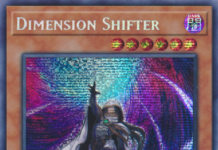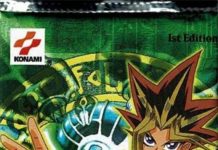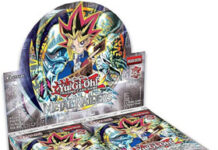Multicolor blocks are very popular, no matter the era – Invasion, Ravnica: City of Guilds, and Shards of Alara all have dedicated fans. But our conception of what multicolor means has evolved significantly over the years. Invasion‘s multicolored cards are largely a combination of abilities usual in their component colors, while Ravnica and Alara developed unique personas and outlooks for each combination. Gruul is not simply red plus green, and Esper is not white plus blue plus black; they’re distinctive ways of thinking about the world. There are still cards that are an ability from one color alongside an ability from another one, but the shift to outlook-based multicolor design was a necessary one considering Magic’s longevity. It allows for many more possible cards and abilities, and it also allows designers to make distinctions between groups that fall within the same colors of mana. You’d never confuse the Gruul Clans and the Goblin Explosioneers.
We certainly got a glimpse of the future of multicolored cards from the Mystery Booster playtest set. For example:
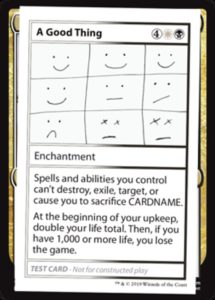
We’ve seen numerous alternate win cards; we’ve seen fewer alternate loss cards. While you can easily do the math on how long it’ll take you to get over 1,000 from various starting points (spoiler: not as long as you think), there are some decks based on attacking that will have serious issues dealing with it. It doesn’t take many steps to get back to 20, and even 30 to 40 life can be an insurmountable number for some decks.
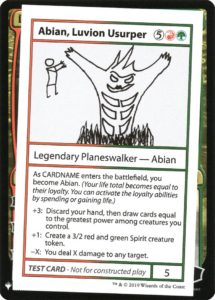
This guy feels like the sort of thing someone designed just to prove they could. Having said that, I actually think he’s less dangerous overall than A Good Thing. For example, it’d be pretty funny if someone used their life total to craft a better hand and/or herd of Spirit tokens, only to get hit by Hidetsugu’s Second Rite. It’s also interesting to contrast the difference between this guy’s interpretation of “you can use loyalty abilities too” and the one used by Blood Poet (I talked about him in my pre-review of black cards).
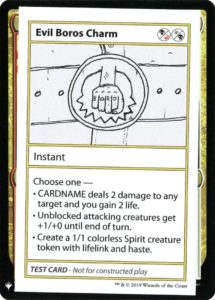
I first encountered mana costs like this many years ago, in the custom card design section of Wizards of the Coast’s official forums. I didn’t like them then, and I don’t like them now. They take way too much time to figure out whether or not you can cast them at any given moment. They bear very little relationship to their colors’ actual abilities. I know that a lot of you probably aren’t going to listen to me in the context of Evil Boros Charm, because it’s probably more generally useful than the Return to Ravnica block’s Rakdos Charm and Orzhov Charm, and it’s strong in any creature-dense deck. But do you notice that it could just as easily have been a non-hybrid Boros, Orzhov, or even Rakdos card?
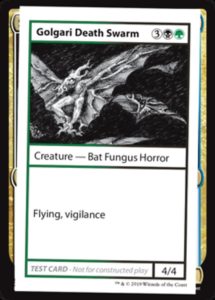
This guy’s not so interesting for the hardcore constructed or cube types, but he is interesting as a meme and/or design curiosity. He’s based on a multiple choice question from one of Wizards of the Coast’s quizzes for designers, about what colors you would make a multicolored 4/4 creature with flying and vigilance, assuming you didn’t want to put it in a color combination that could do it as a monocolored card. The “trap” they’re trying to lure you into is choosing a color combination involving white, or one involving blue – flying and vigilance are common in those colors and the Serra Angel stats can (and have been) mono-white and mono-blue. Black is third best at flying, and green is second or third best at vigilance, so this guy arguably makes sense even though he feels strange.
Golgari creatures seem to all have comes-into-play abilities nowadays, so the Death Swarm is in a weird place. It’s not often that he’ll really boost a black-green deck’s game plan in, say, cube draft. I really hope we get art based on this sketch, though. (And preferably not with a trigger as overpowered as Hydroid Krasis!)
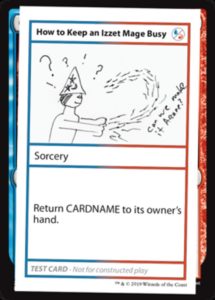
Speaking of designing things just for the sake of it, this one must be here to answer the question “Can I design a spell that does nothing and yet is too powerful for eternal formats?” I don’t know if this is literally overpowered, as it does nothing until the final turn when you cast your ultimate storm card, but it does ensure that you’ll always have a blue card to protect yourself with Force of Will.
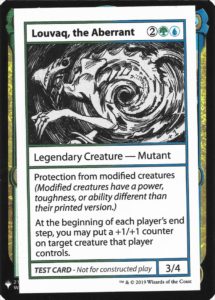
“Modified” is another great idea for a new term. It’s intuitive, it’s easy to discuss, and it applies to basically everything. I wonder if things related to it could take the place of the implied “vanilla creatures matter” theme if we go to Muraganda. I like that Louvaq’s ability can be as simple as clearing the way for himself, or as complex as interacting with Experiment Kraj. You can use him politically in multiplayer, and you can use him with Crowned Ceratok; he can even boost himself, but only once.
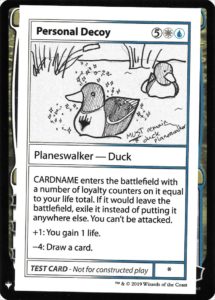
This guy seems surprisingly strong, although seven mana is late in the game in 1v1. Control decks might also want to favor planeswalkers who affect the table more; if they survive that long, they’re in decent shape anyway. I’m almost more interested in the idea of a non-legendary planeswalker. You could have a concept like the pawns (semi-anonymous party members) in Dragon’s Dogma, or the generic security guys who get beaten up by regular characters in brawl scenes on WWE’s programs.
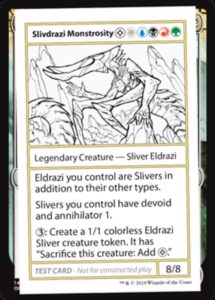
Slivers and Eldrazi are the two tribes that need the absolute least help in all of Magic, so sure, let’s combine them and give them a mega-lord. Some decks will have to reanimate him – I hear Patriarch’s Bidding works well with Slivers – but there’s also a Sliver who grants unearth now, so some will just win out of nowhere.
Maybe the next time they do playtest cards, we can have a Phyrexian Sliver Eldrazi. He could have both ingest and infect, just to make sure everyone misreads his game text at least once a match.
For our final Mystery Booster pre-review, I’ll look at some of the artifact playtest cards. I’ll also do the lands – if you thought Future Sight‘s dual lands were crazy, you’ll love these.

